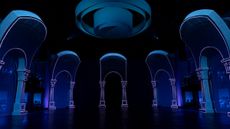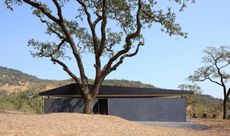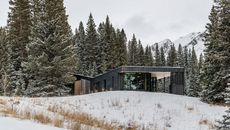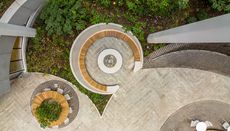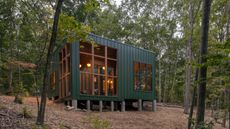Part Office creates minimalist live/work space in heart of Venice Beach
Los Angeles architects Part Office transformed a former residential building into Venice Lofts, a minimalist live/work space
- (opens in new tab)
- (opens in new tab)
- (opens in new tab)
- Sign up to our newsletter Newsletter
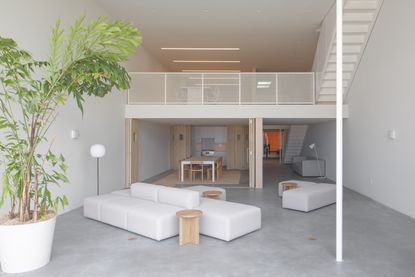
Venice Lofts, a new, minimalist live/work space created by Part Office, in fact started life as a conventional residential building. Set directly on Venice Beach, California, the complex consists of two former condominium buildings, which have been artfully redesigned and restored into 12 live/work units. Created in collaboration with landscape studio Cactus Store, the project is now a contemporary, all-mod-cons space inside and out, wrapped in a unified, pared-down aesthetic and minimalist architecture that emphasises light, clean surfaces and an uncluttered feel.
In order to make clear that this is not your typical office building – and also contains a residential offering – while adhering to local planning codes, the team at Part Office tackled the design in a holistic way that highlights the space’s domestic qualities. ‘Due to code and structural limitations, the envelope of the existing units was preserved, and a 50/50 division of ‘live’ and ‘work’ spaces was required. With the projected tenants being small offices, this division served as a starting point to consider a more residential atmosphere of contemporary workspaces, especially in light of how the pandemic shifted our understanding of the formal office space,' the architects explain.

The material palette is consistent throughout the building and comprises oak, concrete, steel, and tile. Detailing and finishes were treated with care to ensure the result feels seamless and of high-quality construction. However, this doesn’t mean that everything is super-polished; rather, it’s that strategic design gestures guided the internal arrangements. ‘Elements were detailed either very precisely, such as the routing at wood walls to conceal passage doors, or with exaggerated separations and overlaps to create a series of individual planes that direct views towards the exterior,’ the team say.
The minimalist live/work space at Venice Lofts is organised with the residential elements at the base of the building and workspaces on top. All units include kitchen and bathroom, as well as some open-plan and some individual, smaller rooms or meeting areas. Double-height spaces within some units celebrate the building's sense of space. Meanwhile, outside nature and landscaping by Cactus Store refers to windswept coastal environments, and custom orange-glazed tiles by artist Sofia Londoño make for a calming but characterful environment for tenants to enjoy.






INFORMATION
partoffice.com (opens in new tab)
Ellie Stathaki is the Architecture Editor at Wallpaper*. She trained as an architect at the Aristotle University of Thessaloniki in Greece and studied architectural history at the Bartlett in London. Now an established journalist, she has been a member of the Wallpaper* team since 2006, visiting buildings across the globe and interviewing leading architects such as Tadao Ando and Rem Koolhaas. Ellie has also taken part in judging panels, moderated events, curated shows and contributed in books, such as The Contemporary House (Thames & Hudson, 2018) and Glenn Sestig Architecture Diary (2020).
-
 Cerith Wyn Evans: ‘I love nothing more than neon in direct sunlight. It’s heartbreakingly beautiful’
Cerith Wyn Evans: ‘I love nothing more than neon in direct sunlight. It’s heartbreakingly beautiful’Cerith Wyn Evans reflects on his largest show in the UK to date, at Mostyn, Wales – a multisensory, neon-charged fantasia of mind, body and language
By Harriet Lloyd-Smith • Published
-
 Nifemi Marcus-Bello is the Nigerian designer shaping Africa’s designscape
Nifemi Marcus-Bello is the Nigerian designer shaping Africa’s designscapeAmong Wallpaper’s ‘Future Icons’, Lagos-based designer Nifemi Marcus-Bello speaks of creating a local manufacturing network and documenting design production in Africa
By Ugonna-Ora Owoh • Published
-
 Luxury loungewear brands to hibernate in this winter
Luxury loungewear brands to hibernate in this winterAs days get shorter and temperatures drop, we present the best loungewear for luxuriating in this autumn and winter, from brands including Loro Piana, Raey, Extreme Cashmere and more
By Tilly Macalister-Smith • Published
-
 Stage architecture, from Disney to dance
Stage architecture, from Disney to danceClever stage architecture makes or breaks a cultural experience – from Yellow Studio’s set for Disney’s new live-action Beauty and the Beast, to more immersive structures in the genre
By Martha Elliott • Published
-
 This bijou Sonoma County house is in sync with the landscape
This bijou Sonoma County house is in sync with the landscapeAn open and contextual Sonoma County house, Leit House is designed by San Francisco’s Schwartz and Architecture
By Ellie Stathaki • Published
-
 This snowy Rockies retreat is the perfect Colorado family stay
This snowy Rockies retreat is the perfect Colorado family stayDNA Alpine by CCY Architects is a family Colorado Rockies retreat, designed to provide the perfect mountain sports and snowy getaway experience
By Ellie Stathaki • Last updated
-
 Lose yourself in 550 Madison and Snøhetta’s public garden
Lose yourself in 550 Madison and Snøhetta’s public gardenSnøhetta designs a new public garden for 550 Madison in New York
By Pei-Ru Keh • Published
-
 11 Hoyt by Studio Gang sets a new standard for Downtown Brooklyn
11 Hoyt by Studio Gang sets a new standard for Downtown Brooklyn11 Hoyt by Studio Gang has been completed, bringing a fresh residential offering to its Brooklyn neighbourhood
By Pei-Ru Keh • Last updated
-
 Take a Sarasota tour of modernist architecture with us
Take a Sarasota tour of modernist architecture with usJoin our ultimate Sarasota tour of modernist architecture, to explore some of the finest built-environment heritage in the region
By Harriet Thorpe • Last updated
-
 This Connecticut retreat touches the ground lightly within woodland
This Connecticut retreat touches the ground lightly within woodlandThis new creative Connecticut retreat combines generous interiors with a minimal footprint and light touch on the forest floor
By Jonathan Bell • Last updated
-
 Winter House is a Florida home designed for modernist living
Winter House is a Florida home designed for modernist livingWinter House by Steven Harris Architects is a Florida home that brings together serenity, nature and idyllic modernist living
By Ellie Stathaki • Last updated



